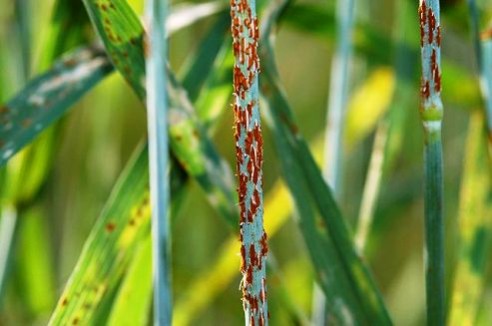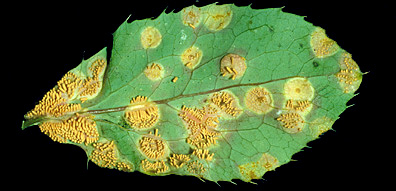The melting of glaciers, sea level rise and intensifying wildfires are some of the attention-getting manifestations of climate change in our world today. Less recognized are changes in ecosystems and populations that are correlated with, if not best explained by, warming of the Earth’s climate. Among these responses are those of organisms that threaten man’s welfare—in other words, pests.
There appears to be a general trend of range adjustments among pests throughout the world. Scientists at the Universities of Exeter & Oxford, have concluded that crop pests have been moving towards the North or South Poles at an average rate of 2 miles (3 km) per year since 1960. This is an average- some insects are moving northward at an average of 12 miles per year, some bacteria not at all. The database consisted of 612 species of pests and pathogens distributed world-wide. Most of the pests are insects, nematodes, bacteria or viruses. Many of these organisms represent serious, even life-threatening risks to human beings, either directly through diseases or indirectly such as by reducing food supplies.
Following is a brief description of one pest species types that has long been recognized as a problem but also appears to be worsening in recent years. Additional pest categories such as mosquito-borne diseases and insects, will be discussed in other posts.
The wheat rust (Puccinia graminis), a fungus with a complex life cycle which includes an alternate host (the barberry [Berberis spp.] and produces five types of spores, has been damaging grain fields in Africa, the Middle East. and temperate zone Asia, where up to 40% of wheat crops have been destroyed by new, aggressive rust strains. The problem is especially severe where there is year-round cropping without crop rotation, providing the rust with the green grass leaves needed to survive without depending on the barberry as an alternate host. New problem areas include the Himalayan wheat-growing regions, while the largest wheat-growing areas of the world, in China, although not yet experiencing serious outbreaks, must be considered as vulnerable.

Late spring stage of wheat rust showing conspicuous reddish pustules containing spores ready to infect other hosts.
Despite its common name the wheat rust in its various strains,attacks not only wheat, but also rye, barley, oats, and other grasses. Puccinia produces spores which land on host plants and “germinate” into thread-like cells (hyphae) that invade the host leaf, forming a matted network of fungal tissue which develops within the host and ultimately may kill the leaf or whole plant, but more significantly, releases many more spores that can infect other plant hosts. Spores are transported long distances by wind or more locally on clothing, animals, farm equipment, etc.
The alternate host, barberry, plays an essential role in most areas because it enables the rust to survive during the period of the year when wheat is not actively growing and green. Unlike most fungi, Puccinia is an obligate parasite that must have living tissue as its substrate. Given that fungal spores are wind-transported, even barberries growing hundreds of miles away from the grain fields can serve as a host for the fungus., In the mid- and early 20th century, barberry eradication programs in wheat-growing regions of Europe and North America helped limit wheat rust outbreaks and reduced losses by depriving the pathogen of a host that enabled it to survive until the next wheat growing season. Barberry control is more difficult in the Africa, the Near East and temperate Asia because of logistics and because barberry is a valued plant used for medicinal purposes.

Magnified cross-section of a barberry leaf (stained) showing sac-like aecidia (plural aecidium) which release spores that infect grasses but cannot reinfected barberry.
In addition, in the past decade, new races of Puccinia have arisen in the Eurasian and temperate semi-arid regions from North Africa to Iran, Uzbekistan and Pakistan. These strains are able to infect previously resistant wheat varieties. This trend is believed to be accelerated by climate change (www.climate-l.iisd.org, www.icarda.org/striperust2014/).
In the United Kingdom, the past mild winter has benefitted the yellow rust strain that attacks wheat successfully in part because of its high genetic diversity. Farmers there respond by employing new, stronger fungicides while scientists seek wheat varieties exhibiting genetic resistance to the new rust varieties (www.fwi.co.uk). A similar response to warming was seen in central Germany where the combination of a cold spring and and an unusually warm summer led to a wheat rust outbreak, the first in several decades. In 2011, new virulent strains appeared in at least 4 northwestern European countries (UK, France, Denmark and Sweden), the first year a single strain emerged at this scale and frequency in the same growing season. Long-distance dispersal via wind-dispersed pollen is likely although the source area in unknown. A new genetic strain with aggressive dispersal abilities also is suspected to be involved (Global Rust Reference Center).
In Australia, temperature and rainfall changes associated with global climate change are projected to significantly reduce wheat yield in Western Australia while modestly increasing it in north-east Australia. Some research has verified that wheat pathogen outbreaks are linked to changing climate
Refs
climateprogress.org
fwi.co.uk
https://publications.csiro.au/rpr/download?pid=csiro:EP10932&dsid=DS2).
(Science/AAAS News 2012-03-16. news.sciencemag.org)

